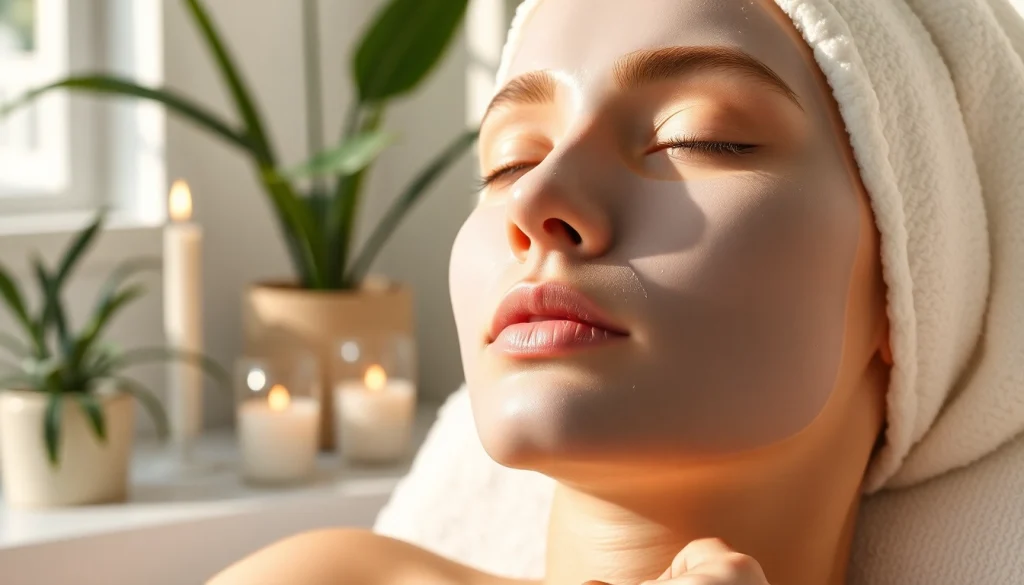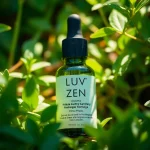Understanding Face Masks: What They Are and Why They Matter
Face masks are a vital component of skincare routines around the world, serving multiple purposes that go beyond mere aesthetics. They provide targeted treatments to specific skin concerns, enhance the overall complexion, and contribute significantly to skin health. A face mask can serve as a quick booster, delivering concentrated ingredients effectively and efficiently. This article delves into the varied types of masks, their application techniques, and how they can aid in revitalizing your skin care regimen.
The Benefits of Using Face Masks
Incorporating face masks into your skincare routine offers numerous benefits, including:
- Targeted Treatment: Face masks allow for focused care on specific skin issues such as dryness, acne, or hyperpigmentation.
- Intensive Hydration: Many masks are rich in hydrating ingredients which provide a moisture boost that regular skincare products may not deliver.
- Exfoliation: Certain masks help slough away dead skin cells, improving the skin’s texture and radiance.
- Relaxation: The act of applying a mask can be therapeutic, promoting mental well-being when combined with self-care practices.
Different Types of Face Masks
Face masks come in a variety of formulations and types, each serving distinct needs:
- Sheet Masks: Made from fabrics saturated in serums, these masks conform to the face, allowing for deep penetration of active ingredients.
- Clay Masks: Ideal for oily or acne-prone skin, clay masks work by absorbing excess oil and unclogging pores.
- Cream Masks: Rich and moisturizing, these are beneficial for dry or mature skin, providing intense hydration.
- Peel-Off Masks: These masks create a film that, when removed, pulls away dead skin cells, revealing a brighter complexion.
- Exfoliating Masks: Often containing acids or enzymes, these masks promote cell turnover and smooth the skin’s surface.
Choosing the Right Face Mask for Your Skin Type
Selecting the appropriate face mask is crucial for maximizing benefits and avoiding irritation. Consider your skin type:
- Oily Skin: Look for clay masks that can absorb oil and reduce shine.
- Dry Skin: Opt for hydrating cream or gel masks packed with moisture-retaining ingredients like hyaluronic acid.
- Sensitive Skin: Choose soothing, hypoallergenic masks that contain calming agents like chamomile or aloe vera.
- Combination Skin: Consider using different masks on different areas of the face, treating oiliness and dryness strategically.
How to Effectively Use a Face Mask
Prep Your Skin: Steps Before Application
Preparing your skin before applying a face mask is essential to optimize its effectiveness:
- Cleanse: Start with a gentle cleanser to remove makeup, dirt, and excess oils.
- Exfoliate: For maximum benefits, slough off dead skin cells with a mild exfoliator, improving the absorption of mask ingredients.
- Steam: Steaming your face opens up pores, allowing deeper penetration of the mask’s active ingredients.
Applying the Face Mask: Techniques and Tips
Application technique can enhance your mask’s effectiveness:
- Follow Instructions: Each mask has specific application instructions. Always adhere to them for best results.
- Use Clean Tools: If needed, apply the mask using a brush or spatula for even distribution.
- Avoid Sensitive Areas: Be careful to keep the mask away from the eyes and mucous membranes to prevent irritation.
- Timing: Respect the recommended duration for each mask; leaving it on too long can have adverse effects.
Aftercare: What to Do Post-Application
What you do after removing your mask is just as important as the application:
- Rinse: If applicable, rinse off any residue with lukewarm water and pat dry with a clean towel.
- Moisturize: Follow up immediately with a moisturizer to lock in hydration.
- Observe: Take note of any reactions to the mask. If irritation occurs, discontinue use and consult a dermatologist.
Popular Ingredients in Face Masks and Their Benefits
Hydrating Ingredients: What to Look For
Hydration is a cornerstone of healthy skin. Common hydrating ingredients include:
- Hyaluronic Acid: Capable of holding up to 1000 times its weight in water, it provides intense hydration.
- Aloe Vera: Known for its soothing properties, it hydrates while calming irritated skin.
- Glycerin: A humectant that pulls moisture into the skin, making it an excellent choice for dry skin types.
Exfoliating Agents: How They Work
Exfoliating agents are essential for removing the build-up of dead skin cells:
- Alpha Hydroxy Acids (AHAs): Water-soluble acids that help to shed dead skin and improve texture.
- Beta Hydroxy Acids (BHAs): Oil-soluble acids that penetrate deeper into pores, ideal for oily and acne-prone skin.
- Physical Exfoliants: Particles like sugar, salt, or crushed seeds that manually scrub away dead skin cells.
Soothing Elements: Natural Options for Sensitive Skin
For those with sensitive skin, it is essential to choose calming ingredients:
- Chamomile: Known for its anti-inflammatory properties, it helps to soothe and calm redness.
- Green Tea: Packed with antioxidants, it reduces irritation and protects against environmental damage.
- Honey: A natural humectant with antibacterial properties, it is gentle and soothing on skin.
DIY Face Masks: Recipes You Can Make at Home
Simple Ingredients for Glowing Skin
Creating your own face masks can be fun and fulfilling. Here are a few recipes:
- Mango and Honey Mask: Mash half a ripe mango and mix with a tablespoon of honey for a hydrating treatment.
- Yogurt and Oatmeal Mask: Combine two tablespoons of yogurt with one tablespoon of ground oatmeal for gentle exfoliation.
- Banana and Avocado Mask: Mash half a banana and half an avocado for a nourishing mask that hydrates and softens skin.
Seasonal Face Masks to Try
Consider adapting your masks to seasonal ingredients:
- Spring: Try a cucumber and yogurt mask for refreshing hydration.
- Summer: Use a watermelon mask for its hydrating effects and soothing properties against sun-damaged skin.
- Fall: Pumpkin puree mixed with honey works great with its natural enzymes for gentle exfoliation.
- Winter: For dry months, combine coconut oil with raw sugar for a nourishing scrub.
Safety Tips for DIY Face Masks
While DIY masks can be effective, it’s crucial to ensure safety:
- Patch Test: Always perform a patch test to check for allergies before applying any new ingredient.
- Fresh Ingredients: Use fresh or refrigerated ingredients to avoid spoilage and potential skin issues.
- Limit Usage: Use DIY masks sparingly to prevent irritation, especially those with strong active ingredients.
How to Incorporate Face Masks into Your Skincare Routine
Frequency of Use: Finding Your Balance
The frequency of mask usage depends on individual skin needs:
- Oily Skin: Masks can be used 2-3 times per week to keep oil levels balanced.
- Dry Skin: Once a week is often sufficient to maintain hydration without over-moisturizing.
- Sensitive Skin: Limit use to once a week and ensure masks are formulated for sensitive skin types.
Combining Face Masks with Other Products
Face masks can be effectively combined with other skincare products, such as:
- Cleansers: Always clean your face before applying a mask to enhance absorption.
- Serums: Use a serum post-mask for added benefits and nutrition.
- Moisturizers: Layer a light moisturizer on top to lock in hydration after using a mask.
Tracking Results: What to Look For
Monitoring your skin’s response to mask usage is crucial. Here’s what to note:
- Immediate Effects: Look for instant radiance and hydration post-application.
- Long-Term Benefits: Consistency may lead to reduced blemishes, improved texture, and enhanced overall skin tone.
- Adverse Reactions: Watch for any redness, irritation, or breakouts, adjusting usage as necessary.


